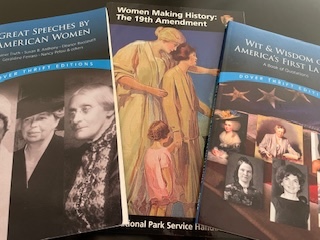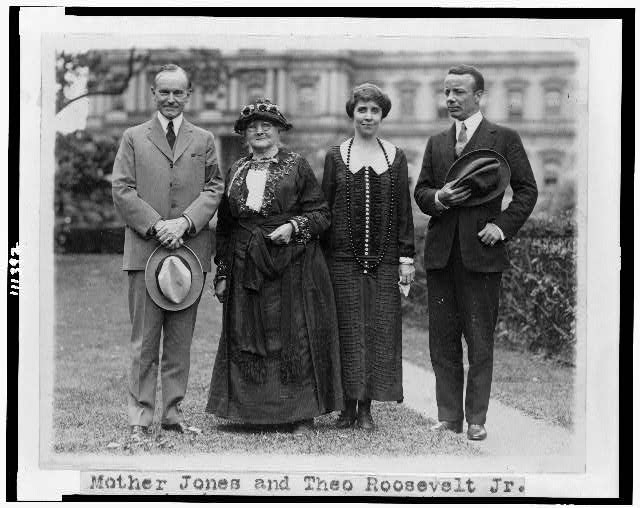I first saw these women at the Penobscot Marine Museum in Searsport, Maine. The obvious whimsy of the picture appealed to me, but I found myself thinking about it long after I had left the museum. Did that mean there was some deeper meaning for me and my work?
Ida Crie took the photograph. She was born as Ida Shepard in 1856 in Rockland, Maine, completed high school, became a teacher and married Rufus Anson Crie, whose family gave its name to Criehaven, a remote island in Penobscot Bay where, even today, there is a seasonal lobstering community. Ida and her husband traveled widely and she took her camera with her. She documented many different regions of the country, but the coast of Maine was her most frequent subject.
She left no clue about these women, but we know the picture dates from around 1890 and was taken in a cove near the Owl’s Head Lighthouse, close to Rockland. The women are ready for adventure. Had they been wearing proper bathing costumes, they would have been covered to their ankles, but they were too impatient to bother changing. They just hoisted up their skirts and petticoats and waded in, crossing the line for what was considered proper clothing at the seaside.
Photography was still relatively young; about sixty years had passed since the very first pictures were taken. Equipment and technique had matured rapidly, but the field had not developed the staid traditions that defined painting, which is maybe why women seemed to thrive as photographers. At the museum, Ida Crie’s photographs were exhibited along with those of two other Maine women of the era, Evie Barbour and Joanna Colcord.
Later, of course, women faced challenges in getting hired as photojournalists, but Ida Crie took photographs for herself, and was free to decide on her subjects and style.
The women are watching something, but I don’t know exactly what. Maybe a fish skimming the surface or a crab inching along the bottom? I imagine them feeling both joyful and intent. Intent on watching whatever it is, and joyful with the thrill of cold water on bare legs on a summer day.
When I got home to Boston, I kept thinking about the women, but why? They are a generation older than the women in my book and not connected in any way. But as boundary crossers, they’re similar. The women in my book set out to have careers in an era when women were expected to stay home. These women waded into the water when they were expected to keep their skirts dry.
Like the work of many women photographers, Ida Crie’s pictures are invaluable records of the past. The moments they record may seem idle or of only passing interest, but an accumulation of such moments tells the story of a life. And life stories are one way to understand history. This is what I have tried to do in my work — compile biographical portraits of women who were boundary crossers and allow their lives to reveal a slice of women’s history.




